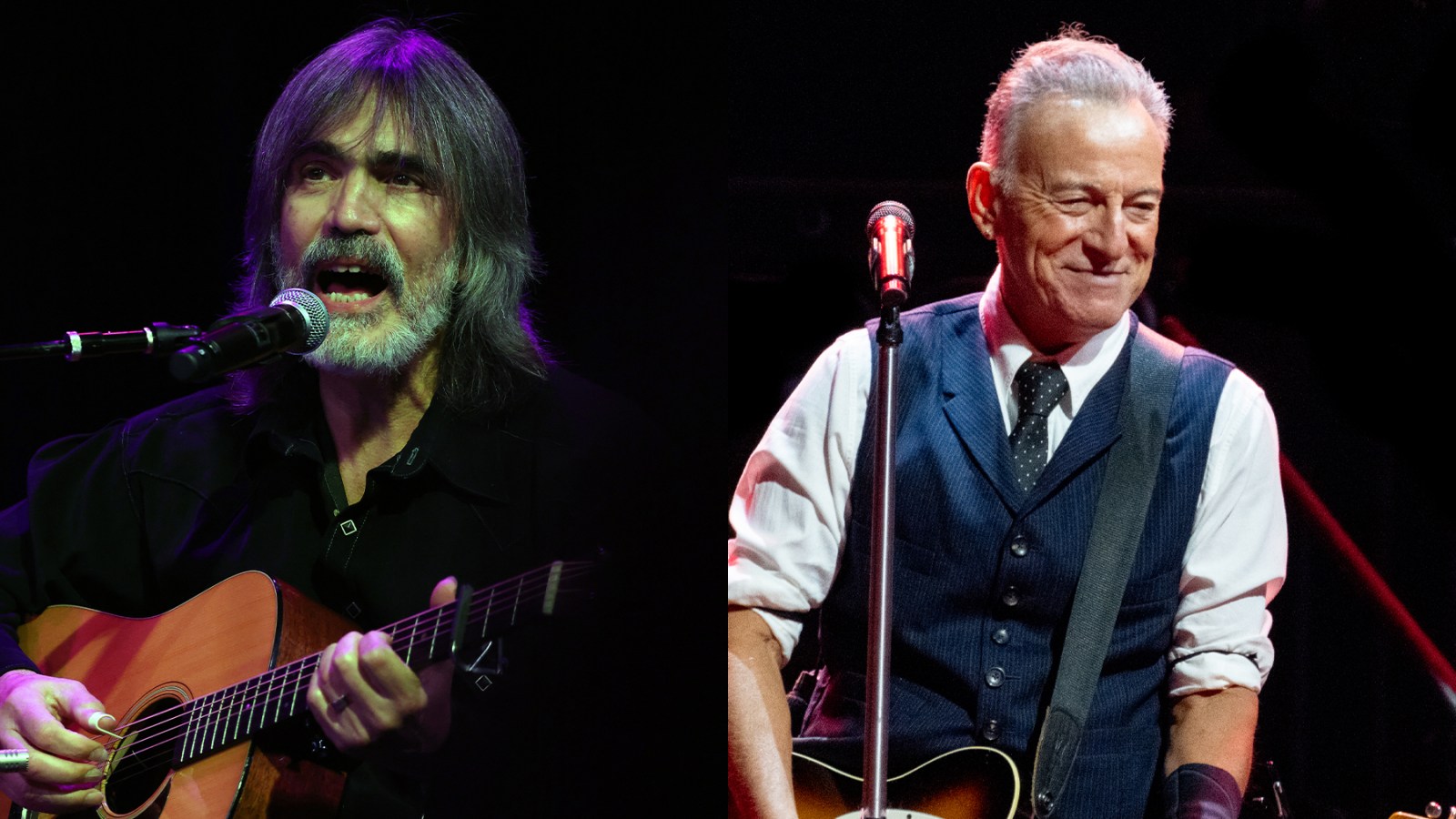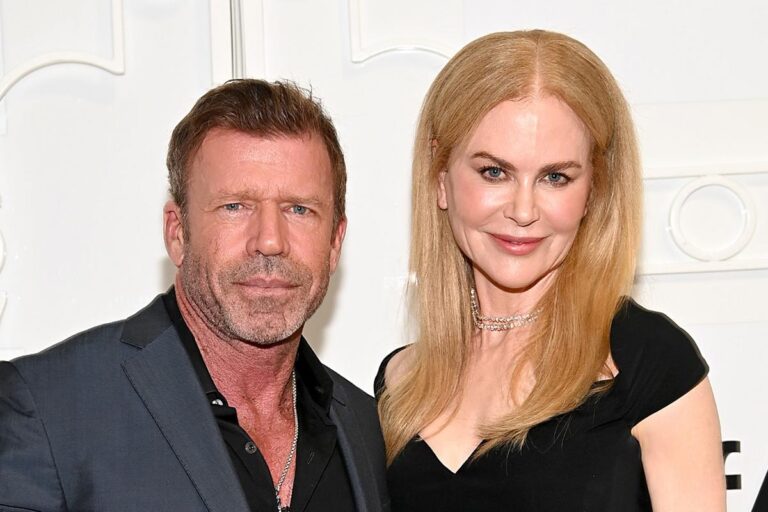Larry Campbell still remembers the voicemail he received early this spring, and from a familiar voice: “This is Bruce Springsteen. You know, I’m Patti Scialfa’s husband.”
Campbell knew Springsteen’s tongue was planted firmly in cheek. The veteran guitarist’s résumé includes a seven-year stint in Bob Dylan’s band starting in 1997 and studio sessions with Dylan, Paul Simon, Levon Helm, Rosanne Cash, and just about every American music legend of the last half-century. (He’s also toured and recorded with his wife, singer Teresa Williams.) His connections to the Springsteen-Scialfa home go back a ways, too. In the Eighties, Campbell met Scialfa when the two sang and played together in bands on the New York club scene, met Springsteen at a birthday party for E Street bassist Garry Tallent, and guested on one of Scialfa’s albums. He was even briefly the boss of the Boss: In 2003, Springsteen played guitar on an album Campbell co-produced for their friend Soozie Tyrell.
Even with that background, Campbell was surprised when he returned Springsteen’s call and heard what was afoot. Springsteen: Deliver Me from Nowhere, the movie about the period of crisis that led into the making of the pared-down Nebraska in 1982, was in the midst of filming. Over the last 40-plus decades, Springsteen has slipped all 10 of its songs into setlists, whether on solo tours and with the E Street Band. But until that call to Campbell, he’d never played the whole record start to finish with the same minimalist accompaniment. And with the movie on the way, now appeared to be the time. “He said the songs had never been performed the way they were recorded, and he needed a second guitar player, and would I be interested and have time to do it?” Campbell recalls. “I said, ‘Gee, let me think about this — yes.’”
Campbell well remembered the arrival of Nebraska and how it stood apart from Springsteen’s catalog and the musical landscape at the time. “I’m an old folkie at heart,” he says. “And one guy with a guitar telling a story, if it’s done well, I’m in. It was showing a side of Bruce that I certainly didn’t know was there, and I really respected what he was doing when that record came out.”
After signing on and learning that E Street Band keyboardist Charlie Giordano would be the only other musician on the project, Campbell started his prep by relistening to Nebraska and focusing on the subtle overdubs Springsteen added to his voice-and-guitar basics. “I’d listened to that record many times, but I didn’t pay attention to what was going on instrumentally, because there wasn’t a lot going on instrumentally,” he says. “Bruce asked me to listen to the tracks and stay true to the second guitar stuff going on in there. That took a lot of paying attention to what was going on. His engineer did send me some of those guitar parts separated, because they’re not mixed where they’re really discernible.”
With the taping only a few weeks away, Campbell then began playing along with the record, attempting to match the rhythmic punch in “Open All Night,” “Johnny 99,” and “State Trooper,” and delicate folk cadences in “My Father’s House” and the album’s title track. “It was impossible to get note for note everything that was played, but I wanted to absorb the vibe and the chordal inversions,” he says. “Once I thought I felt it and got it, I moved onto the next song.”
In what Campbell calls “one of those pinch-yourself moments” he and Giordano, who would contribute synthesizer and celeste to replicate the subtle glockenspiel parts, found themselves at Springsteen’s home studio in New Jersey, rehearsing the material the first time as a trio. To recreate Springsteen’s mandolin on songs like “Atlantic City,” Campbell brought his own instrument and borrowed one of Springsteen’s 12-strings for others.
Since the Nebraska songs are structurally simple, Campbell says the warm-ups weren’t overly difficult. “As far as technical guitar playing, none of that was challenging,” he says. “But what was challenging about it — about all of them — was feeling like I was expressing the mood of each of those songs. I had to really listen to the lyrics and put myself in a place that was emphatic to what Bruce was trying to say. I had to feel like I could see myself inside the songs.”
After only a few days’ warmup, the musicians, crew, and director Thom Zimny, who’s worked on five Springsteen films (including the one made from the Springsteen on Broadway shows), met up at the Count Basie Center for the Arts in nearby Red Bank, with no audience in attendance. Arriving at the venue, Campbell realized how secretive it was; no fans were milling about. “I wasn’t thinking about that or aware of it,” he says. “Any of the intrigue was just superfluous to what we were doing. It was all very low-key.”
As the musicians set up onstage, facing the empty row of seats, Campbell began to realize the rationale behind that scenario, even if it wasn’t fully explained to him. “This may be me projecting, but that sense of emptiness contributed to the vibe of the whole thing,” he says. “I was watching Thom film it, and the starkness of it all, to me, was the proper illustration of the stories on that record. It really captured the landscape of this body of work. It felt to me like Thom wanted to get Bruce’s performance on film in a way that really enhanced that darkness.”
Over the next few hours, the musicians got to work, cutting several takes of each Nebraska song. Campbell recalls the musicians moving efficiently from tune to tune, with what he calls just a “trunkload” of guitars behind him and Springsteen. “It was, ‘Let’s do this like you’re in a recording studio and do this song and then this song next,’” he says. “It was business. As the filming went on, Campbell watched as Springsteen and Zimny huddled after each take: “Thom would say, ‘Okay, that’s great,’ and if Bruce was cool with it, we moved on.” According to Campbell, the trio didn’t attempt any songs that weren’t on the album, but given they played a few versions of each song, this still means there’s an alternative live Nebraska now in the vaults.
When the recording and filming were wrapped up, the project was over almost as quickly as it had started. “Bruce was very courteous and thought it went really well, and then we went our separate ways,” Campbell says. He hasn’t yet seen Zimny’s completed movie of the concert, which will be included in the Nebraska ’82: Expanded Edition box out on Oct. 17. But even given the abbreviated timeframe of the project, Campbell believes he gained an enhanced understanding of the album. “That landscape he created with that record was a real interesting and emotionally moving place to be for a couple of days,” he says. “I very much look forward to the next collaboration, if that ever comes around.”



